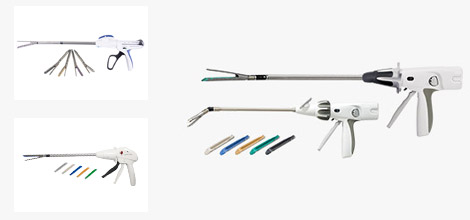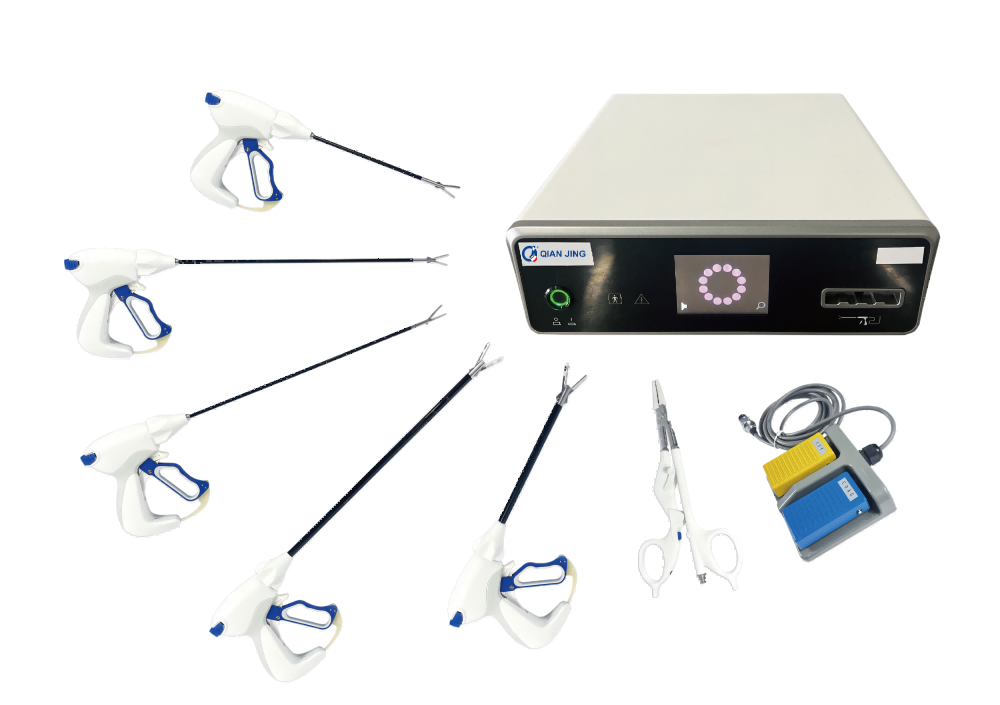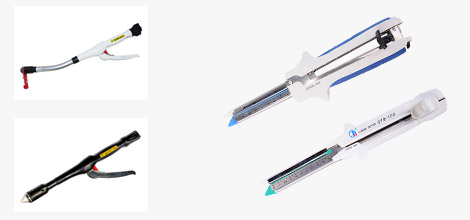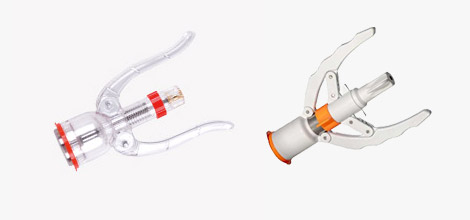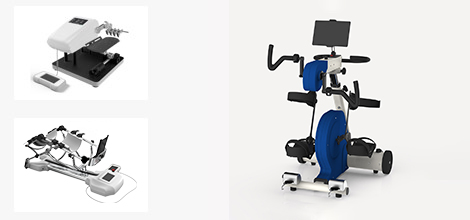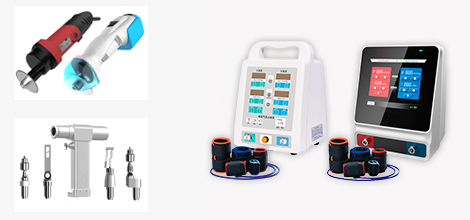Introduction to the use and benefits of the disposable circumcision stapler
Circumcision is one of the earliest surgical procedures performed in male surgery, and the earliest record of circumcision has a history of 5,000 years ago.
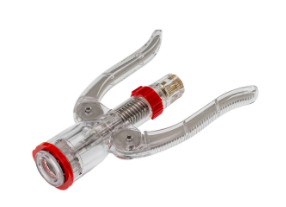
The specific methods of disposable circumcision stapler are as follows.
1. Measurement: Measure the size of the glans with a ruler and select the corresponding instrument specifications.
2. Skin preparation: routine skin preparation, disinfection of the towel with iodophor.
Anesthesia: conventional local anesthesia, sacral anesthesia, general anesthesia for uncooperative children (circumcision can also be performed during other procedures), wait and make sure the anesthesia takes effect.
4. Treatment of comorbidities: if the foreskin is circumcised, expand the foreskin opening, cut it open if necessary, do not cut it too deep, do not exceed the cutting and suturing area, if you can not put in the bell-shaped glans, you can cut more places; if the adhesions need to separate the adhesions first; if the ties are too short, they should also be corrected first; all the above pre-treatment must first stop bleeding thoroughly.
5. Place the glans: use a hemostatic forceps to clamp the ventral side of the foreskin (at the ligature) at the displacement of the inner and outer plates, and use another hemostatic forceps to lift the foreskin with even clamping. Place the bell-shaped glans seat into the foreskin with the bell cover over the glans. Take care that the inner plate is properly stretched and the glans is gently pushed into the bell shaped glans at the ligature to ensure the ligature length. If the foreskin is pre-cut, additional hemostatic forceps can be added to clamp each incision to prevent tearing when placing the glans seat.
6. Determine the cutting position: the right thumb or index finger is held against the end of the lever to lift the foreskin, the inner palm of the left hand with the pinky finger in a semi-clenched fist against the skin of the abdominal wall to prevent lifting, the middle finger and ring finger with the palm of the hand to hold the penis, the index finger will be loose on the side of the tether and feel that the glans has entered the bellows. The longitudinal axis of the bell-shaped glans seat is angled to the longitudinal axis of the penis to keep the bell edge in line with the direction of the coronal sulcus, and the area to be cut is determined. The foreskin is tied to the puller with a tie or silk cord. Re-check to make sure the precut site is accurate and the foreskin is adequately secured to the puller, and if there is an error, it can be easily adjusted at this point. If the foreskin is tied too much, back the foreskin to the ventral side with the left hand and tighten the foreskin when putting on the instrument; if it is too little, lift part of the foreskin with a hemostat and tie it again under the original ties or ties, noting that the ties are in a loose state. Foreskin is too thick too much or the foreskin of a child is relatively too much, must be cut off the excess foreskin outside the tie or tie line, so as to smoothly place the instrument and perfect cutting.
7. Put on the main body shell: left hand middle finger, ring finger and pinky finger with the palm of the hand to hold the penis, index finger and big finger hold the bell-shaped glans seat bell along the area, the right hand will disposable circumcision stapler set, the handle is placed in the direction of easy to hold. The left hand index finger with the big finger can hold the instrument shell, the right hand will adjust the knob and tighten to pull the rod end face and the back of the knob flat or slightly protrude stop. Do not protrude too much, or press the handle will pull off the bell-shaped turtle head seat. Adjust the two ears of the knob to avoid the direction of the handle so that it does not affect the handle press. The assistant wraps the foreskin of the head of the instrument with dry gauze to minimize blood leakage from the squeezed tissue.
8. Finish cutting and suturing: After making sure that the cut position is correct, remove the red safety. Hold the handle with both hands, mainly by the hand at the head of the handle, the hand at the end of the handle is mainly to maintain stability and auxiliary force, and press the handle smoothly. At this point, the cutting knife and the staple are pushed out at the same time and the cutting and stitching is completed at the same time. Press the handle to the end and hold it for a few seconds to achieve full cutting and suturing.
9. Exit the disposable circumcision stapler: Release the handle after a few seconds, or use hand-assisted release when the handle will not release on its own. Hold the disposable circumcision stapler with your left hand, turn the adjusting knob with your right hand to loosen it up to 5-10mm, then push the knob forward to make the cutting part loose. Observe whether it is completely cut, if there is a little uncut, use a blade or scissors to trim.
10. Hemostasis: gently spin out the bell-shaped glans seat and immediately wrap the surgical site with dry gauze, press with five fingers evenly apart to stop bleeding for 3-10 minutes, and then see the suture after release. When there is a large bleeding, additional sutures must be added to stop the bleeding.
11. Double bandage: After the hemostasis is completed, immediately wrap the surgical opening with Vaseline or iodine gauze, and then wrap it with dry gauze, preferably with a self-adhesive elastic bandage with appropriate pressure. When there is no self-adhesive elastic bandage, it is recommended that the outer dressing be sewn to prevent loosening for a short time. If the degree of tightness is not grasped, it is better to have a few stitches loose and a few stitches tight under the premise of playing the role of pressure. If you need to use a larger pressurization, then pack two layers. The inner layer is wrapped with light pressure (also can be wrapped with hemostatic sponge and then gauze), separated by gauze, and the outer layer is wrapped more tightly; when urination is not good, the patient can be asked to loosen the outer layer and wrap it tightly after urination, or not wrap the outer layer after 24 hours, but do not loosen the inner layer by yourself.
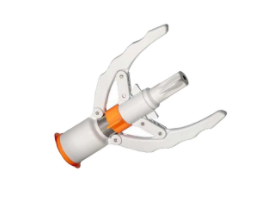
Benefits and advantages of using a disposable circumcision stapler.
First: no stitches are generally needed. The disposable circumcision stapler releases the staples to close the incision while cutting under pressure, and the staples are dense enough to stop the bleeding and align the incision, and no more silk sutures are generally needed.
Second: The surgery time is short, usually only 5-10 minutes to complete the surgery, compared to 20-30 minutes for traditional surgery. The shortened surgery time reduces the patient's pain and reduces the patient's tension and anxiety.
Third: Less bleeding, because the disposable circumcision stapler releases the staples for hemostasis while cutting, so the steps of cutting with scissors and then finding the bleeding point to stop the bleeding are combined in the traditional surgery, so the bleeding is significantly reduced.
Fourth: No need to use electric knife electrocoagulation to stop bleeding during the surgery, traditional circumcision basically uses electric knife, some studies have found that high frequency electric knife and laser knife during the surgery may lead to serious postoperative complications, although the probability of occurrence is extremely low, but it is also a risk factor to be vigilant, anastomotic circumcision is successful in avoiding this risk factor.
Fifth: neat and aesthetic appearance, smaller post-operative scar. Since traditional surgery requires the use of tissue scissors to manually cut the inner and outer foreskin plates, the edges are often not particularly neat, while the anastomotic circumcision directly uses a circular mold to cut off the overgrown tissue in one stroke, ensuring the neatness of the edges and the beauty of the shape. The sutures are evenly distributed between the staples, and the incisions are perfectly aligned, resulting in better healing and smaller postoperative scarring.
Sixth: Fast wound recovery and fewer complications. Because of the short operation time, less bleeding, relatively less tissue damage, and dense suture staples, the risk of rebleeding, infection, and edema after surgery is lower than that of traditional surgery. 7 days or so, the suture staples gradually begin to fall off, and generally 2 weeks to 3 weeks can fall off, and only individual patients need to come to the hospital to remove the staples.
Seventh: One surgeon can complete the operation of the disposable circumcision stapler, which is simple and convenient to operate.



 info@qjmed.com
info@qjmed.com